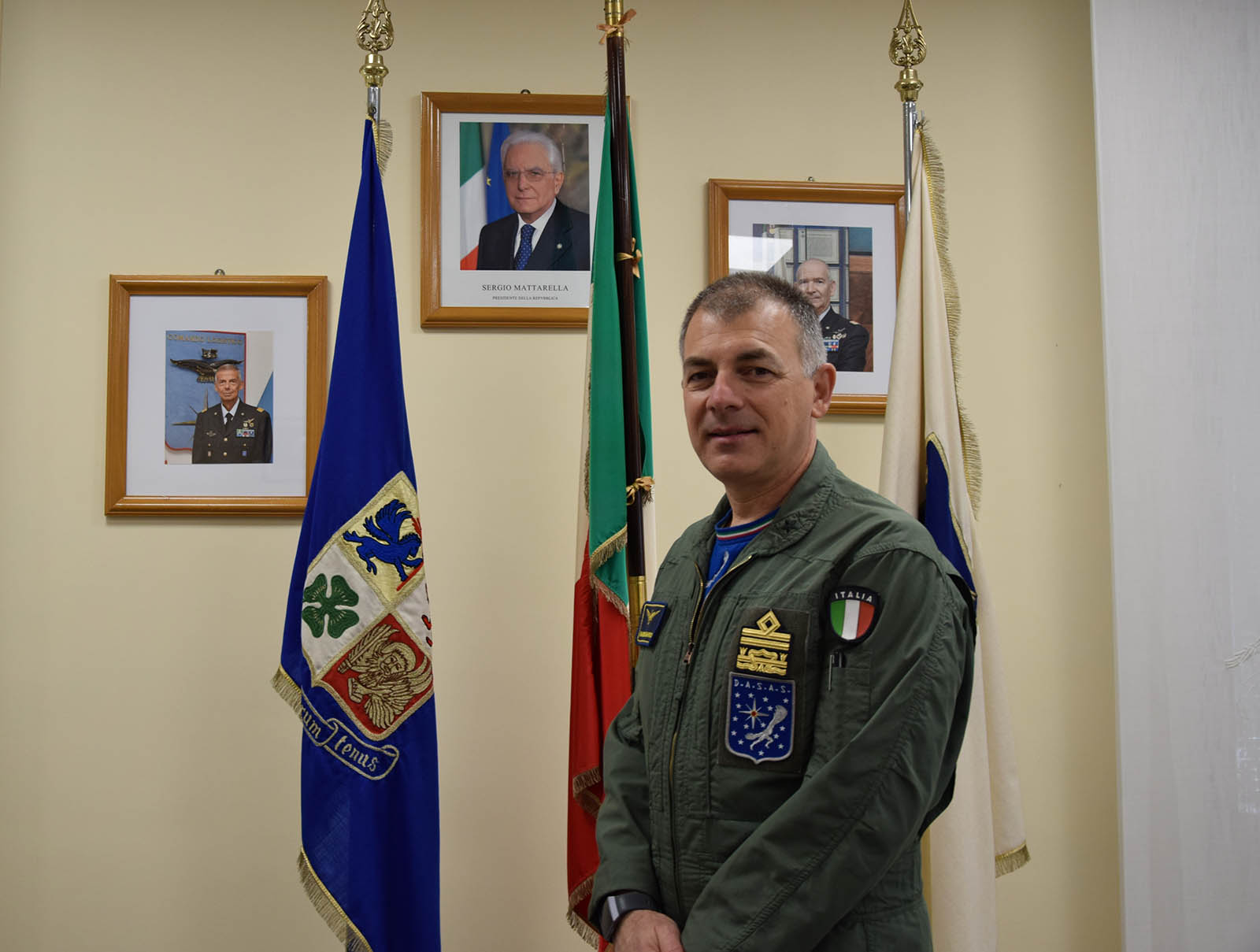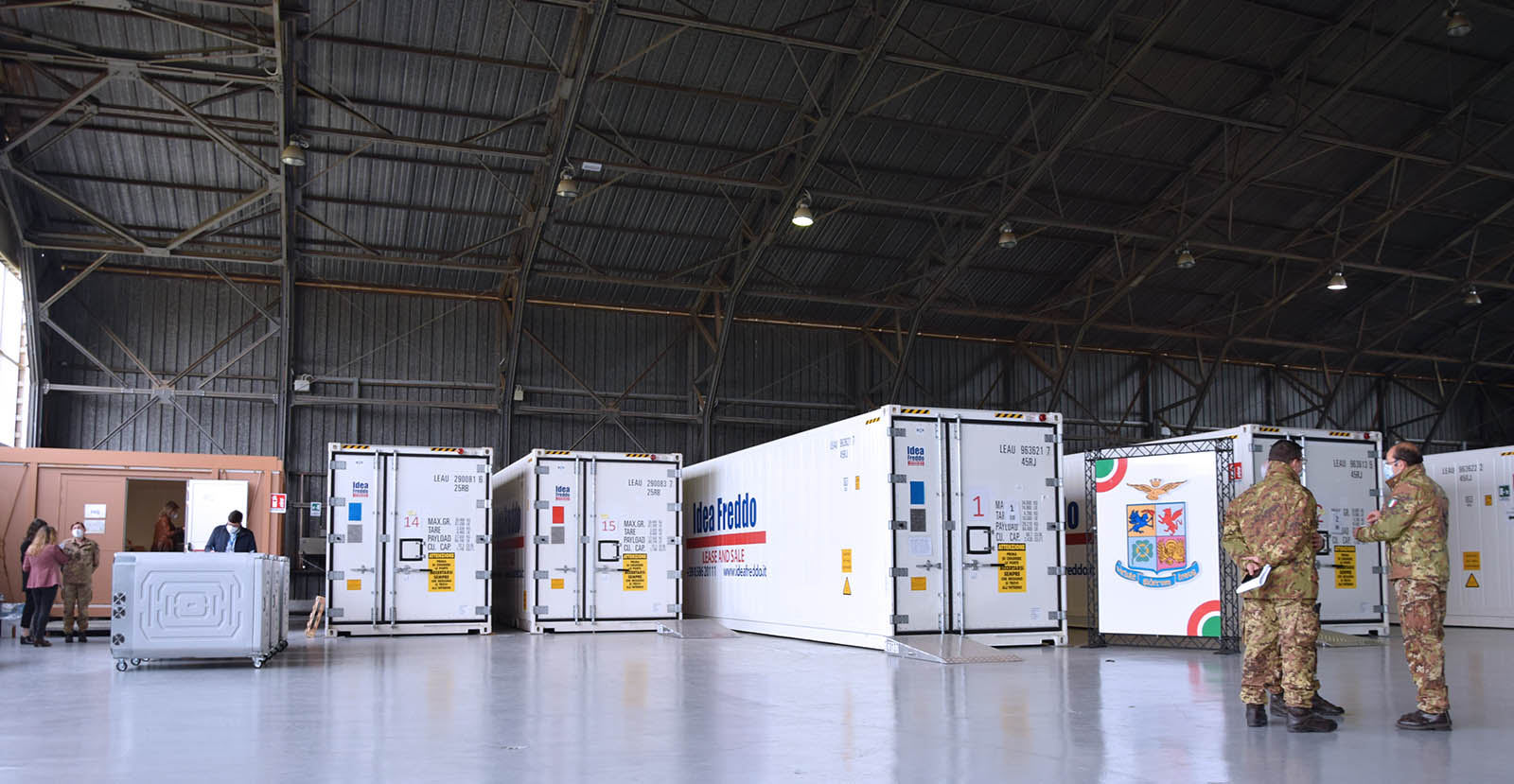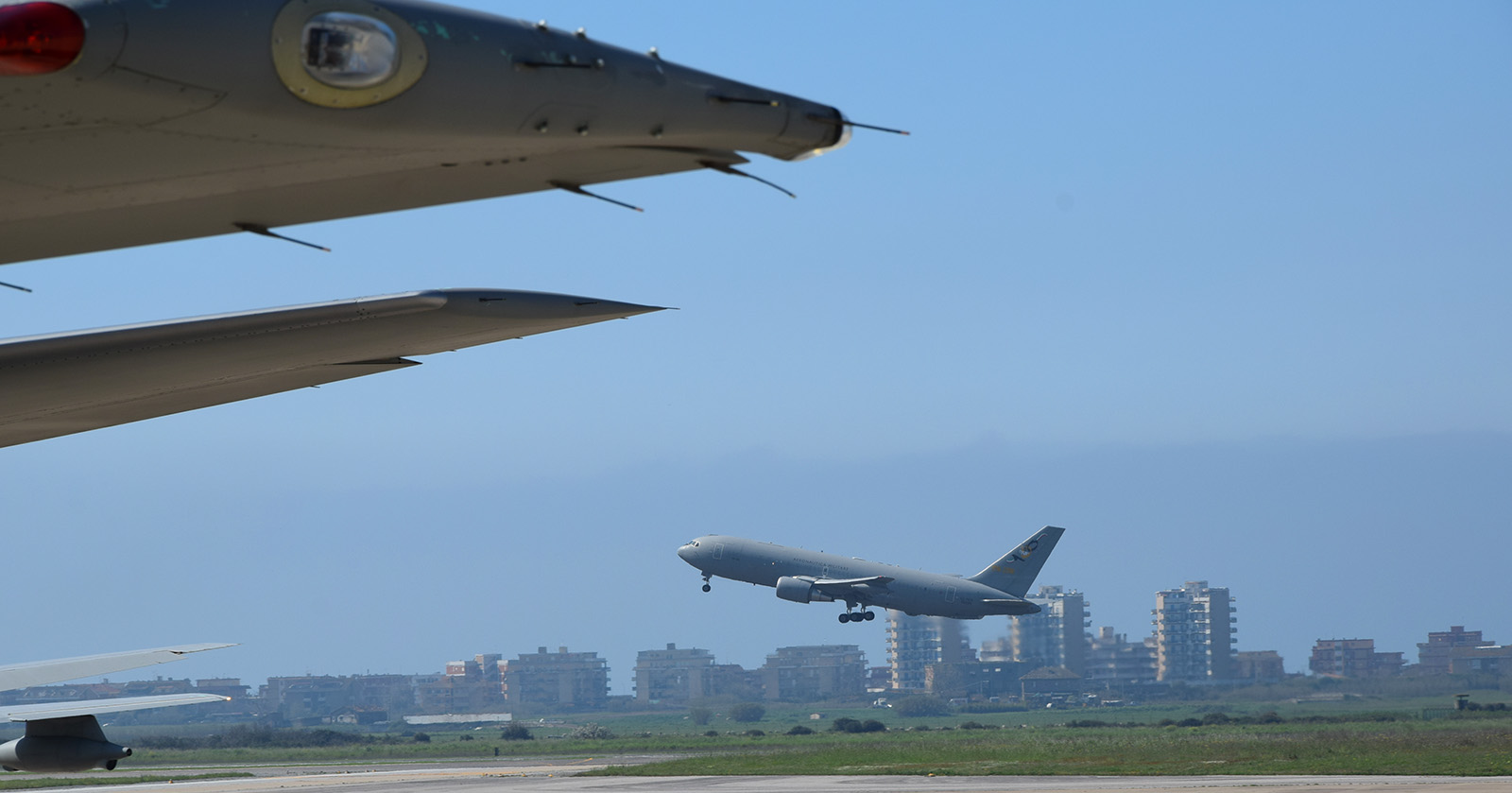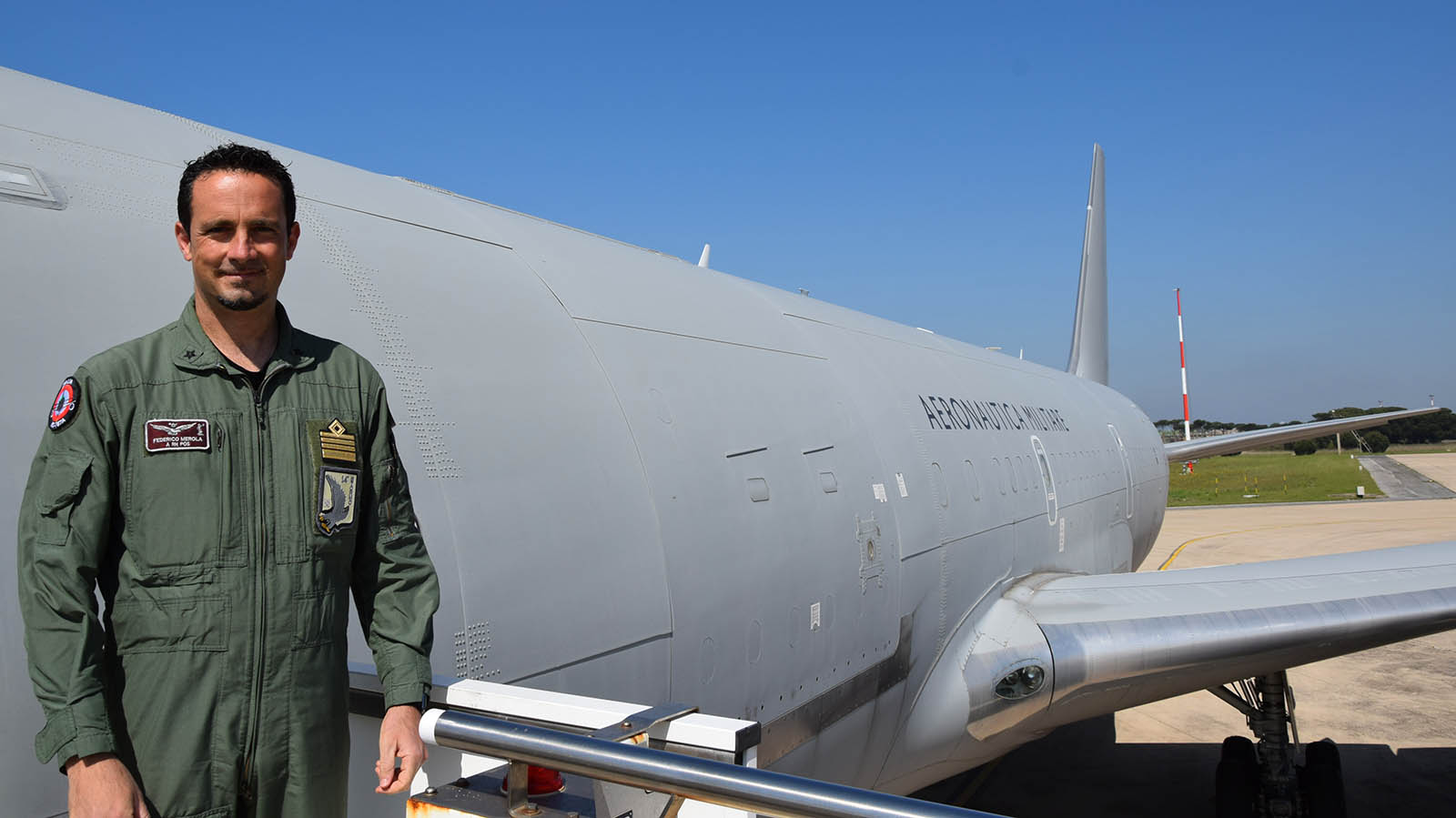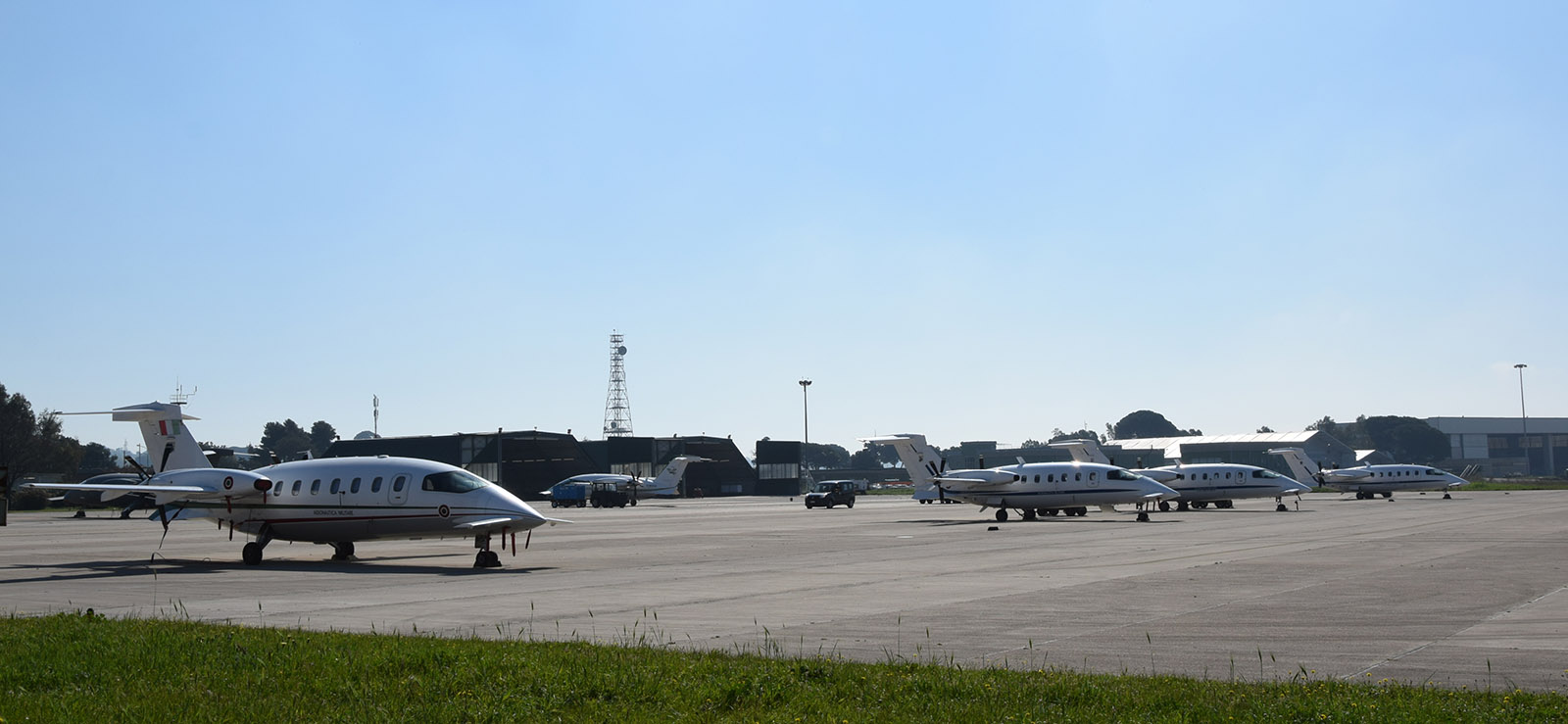Aviation
On the wings of vaccine
The Pratica di Mare base houses the nowadays famous national vaccine HUB, but it is also Italy’s largest air base where the Air Force's technological innovation comes to life.
Apr 2021
"The important contribution provided to cope with the health emergency has not kept our ‘Blue Air Force’ from the task of fulfilling the duties it has been entrusted in the national and international sphere and of directing its attention to the wider challenges of technology and the evolution of air vehicles."
Such words - part of the message that President of the Republic, Sergio Mattarella, dedicated, on last March 28th, to the women and men of the Air Force on the occasion of its 98th anniversary - are certain to have been particularly appreciated where that evolutionary challenge happens. That is, a few kilometers south of Rome, at the Pratica di Mare military airport: with over 830 hectares, it is the largest Italian base and one of the largest in Europe.
Pratica di Mare is also the most densely populated base, with over 4 thousand women and men belonging to the various armed forces, as well as to different state or civilian bodies. It hosts 8 flight lines and 22 bodies belonging not only to the Air Force but also to the Navy, Army, Guardia di Finanza, Police and Carabinieri. It is an extremely intricate and complex airbase.
General of the Air Division Mauro Lunardi, took office as Commander of the Flight Experimental Center and the Pratica di Mare Airport Command last July 23rd, just a few months after the outbreak of the pandemic that has devastated the world. His objective is to govern while reorganizing such complexity.
The Flight Experimental Center and the Pratica di Mare Airport Command have been unified within a new organization that went live last March 8th and that has been called Aeronautical and Space Experimentation Air Division
"We put together these two Commands within a new organization that went live last March 8th under the name DASAS, (the Italian acronym for Aeronautical and Space Experimentation Air Division). “It took intense months of commitment, during which we not only 'transformed' ourselves, but also continued to perform our institutional duties, in a new and constantly evolving context of emergency.”
In such a vast context, the new DASAS undoubtedly attracts interest due to its technological vocation: “The name Aeronautical and Space Experimentation Air Division effectively sums up the mission that we are called upon to carry out", continues the General. “In fact, our specific task is to address - with interdisciplinary methodologies and in synergy with national and international aeronautical excellences - studying, experimentation, testing, technical-operational evaluation and research support of new aeronautical systems, that also may benefit other Armed Forces, as well as the Italian Armed Corps when necessary"
This is a mission that Avio Aero, historical partner of the Air Force, knows from first-hand experience. For example, it was involved in a recent shared project based on digital technology for engine testing. But the “Blue Air Force’s” keen eye for innovation does not stop with the industrial world. On the contrary, it cultivates talent through its relationship with the best centers and universities dedicated to study and research, mainly, but not only, aimed at flight.
"These are never one-way relationships, rather exchanges of knowledge and information: the knowledge gained by our staff is as crucial as the knowledge we pass on to our interlocutors. Even professionally, without a shadow of a doubt, it is a stimulus for continuous improvement, which is the core of our activity," the General says.
Compared to the corporate sector, DASAS is like a giant engineering department: every single aircraft belonging to one of the fleets in the Air Force passes through its competence. Any modification, design characterization, or technological optimization is governed by this division, and even the technical-operational certifications for each aircraft or helicopter are issued here.
"In these times of emergency," recounts General Lunardi, "we have increased the capabilities of aircraft able to perform high biocontainment transport. Our doctors and nursing staff have participated in dozens of repatriation and transfer missions for compatriots affected by Covid-19. We have designed and manufactured the ‘ARTA’ fittings, thanks to which it was possible to transform snorkeling masks into protective devices used by the medical staff of hospitals in Rome. Last but not least, we have become the only national HUB for anti-covid vaccines, operating under COI (Interforce High Command)."
Among the aircraft mentioned by the General, and directly deployed during the medical emergency, alongside the Leonardo C27J and the Lockheed Martin C130, is the Boeing KC-767 Tanker which - in addition to being powered by CF6-80 engines by GE Aviation, renowned for their reliability based on more than 430 million hours of accumulated service - is with the 14th Wing located at Pratica di Mare.
The 14th Wing is made up of 4 fleets, within which various squadrons operate. Its military personnel are multi-skilled as they are equipped with various assets and operational capabilities that allow them to manage very different air missions. "They are used to define ourselves as a 'force multiplier' as we are crucial for the Air Force not only for logistic, technological support and training, but also for the projection of aerospace power beyond national borders" says the Commander of the 14th Wing, Colonel Federico Merola.
As an expert pilot, with experience working with the US Air Force and with a solid technical background, the Colonel knows not only the aircraft but also the GE CF6-80 engines. He proudly adds to this aeronautical culture the fact that key components of this engine are made in Italy. In fact, the Avio Aero headquarters in Rivalta di Torino produces the turbine disks and accessory gearbox, while some stages of turbine vanes are produced in Pomigliano d'Arco.
"With the KC-767, we carry out primary Air-to-Air Refueling (AAR) missions - i.e. in-flight refueling to extend range and increase operational persistence - and strategic transport missions even under biocontainment," explains Colonel Merola.
The KC-767 is an aircraft with extraordinary, in some cases unique, characteristics. The Italian air force's tanker is the first non-US tanker to be certified to refuel fifth-generation aircraft such as the F-35. It can carry large amounts of fuel to refuel other aircraft in the air (Air to Air Refueling, AAR) and is also capable of receiving fuel from one of its peers (so-called buddy-buddy refueling). This is achieved thanks to a combination of impressive technology: a telescopic boom on the belly of the aircraft and three refueling points consisting of a flexible hose and a refueling drogue, positioned on the wingtips and on the belly, which can be extended according to the need and type of aircraft to be refueled.
This aircraft, which is available to very few air forces in the world (and its commercial version typically flies intercontinental routes) has a total capacity for 200 passengers, 100 in the combined version, which uses almost half of the fuselage for cargo up to 40 tons (which becomes more than 80 in the full freighter version). The KC-767 has been amidst the aircraft of choice for missions involving patient transport (under biocontainment) as well as equipment (e.g. ventilators) even since before the Covid-19 epidemic began to rage through Italy.
The KC-767 is able to transport fuel and refuel other aircraft in flight and is qualified for the special transport of patients in biocontainment, as well as for the transport of up to 200 passengers or equipment in the full freighter mode
"We were entrusted with the first repatriation flights from Wuhan for our 56 compatriots" says Col. Merola. “These were Italian citizens to be evacuated on a route that typically presents a major problem: the impossibility of making stopovers at intermediate airports. In fact, at the time, no nation would have been happy to have a plane returning from the epicenter of the pandemic on its soil!"
The Colonel's expression of competent confidence is easing the outcome of his story, hinting at the key role of a second KC-767 that was alerted in advance and sent to fly over the Adriatic Sea aiming at the Eurasian border, ready to intervene in case the first KC aircraft returning to Italy from Wuhan needed refueling.
"In the end, no AAR was needed, but it was essential to plan for it," concludes Col. Merola, giving us an exclusive offstage. "In addition to the obvious distance, the route to China has fairly unpredictable winds. So, it was a huge relief for the pilot to note that the favorable winds would spare him the extra refueling and therefore a very delicate maneuver requiring coordination and intense concentration. Imagine refueling at over 800 km/h, at an altitude of 9,150 meters, in the grip of 100 or 200 knot winds (at best conditions)!"
In addition to the portentous KC-767, the 14th Wing also boasts fleets of Piaggio Aerospace P-180s - both for flight inspection supporting air navigation and in the tactical transport version for the armed forces and Civil Protection - and the military version of the Gulfstream G550, specifically the E-500A. The latter, better known by the acronym CAEW (Conformal Airborne Early Warning), is a radar aircraft capable of flanking complex operations and detecting even the least visible airborne threats (such as drones).
It is thanks to the E-500A that in 2016 the Air Force acquired Airborne Early Warning (AEW) capability recognized by NATO for the first time and with which the 14th Wing is an integral part of the National Defense and Security system. In addition, 14th Wing is also part of the European Air Transport Command, which aims to increase the effectiveness and efficiency of the aircraft available to Member States for transport, in-flight refueling, and medical evacuation by sharing carriers, tasks, and intentions. EATC has played a central role during the pandemic.
Today, the Pratica di Mare airport maintains, after 14 months, the same centrality as the only national HUB for the reception, storage, packaging, and subsequent distribution of Covid vaccines. In record time, one of its hangars (the Butler) was adapted to house the 16 shelters (refrigerated containers) that store the vaccines received from abroad at predetermined temperatures, guaranteeing constant respect for the cold chain. The hangar was refurbished by the Air Force Engineering Departments, assisted by DASAS personnel, and equipped with a power supply system for the 16 shelters, as well as an additional auxiliary generator system that guarantees power supply, in any case.
"The choice of Pratica di Mare airport was strategic not only because of its geographical location, which allows for a fast distribution of vaccines throughout the country, but also because of its normal 24/7 operation, its size and the security framework it can guarantee," adds General Lunardi.
Here, each less complex element knows exactly what tasks it has been assigned and what function to perform: it is clear that being a Commander in such a context is undoubtedly an advantage
All brands of vaccine are delivered directly from the pharmaceutical companies to Pratica di Mare. Here, the military personnel from the various Armed Forces employed in the EOS operation - managed and directed by the Joint Movement Coordination Center and auspiciously named after the Greek goddess of dawn, the rebirth of the sun - takes care of storage, unpacking and subsequent repackaging in the quantities intended for the various regions of Italy according to the commissarial plan. Locations within 300 km from the military airport are served over land, those beyond by air to guarantee the cold chain.
"In this exceptionally varied complex period, certainly what has helped me is the constancy of our organization. It is based on strong principles and enjoys a well-proven structure," concludes the General. "Here, each less complex element knows exactly what tasks it has been assigned and what function to perform. It is clear that being a Commander in such a context is undoubtedly an advantage. It is a bit like being the conductor of an orchestra of professional musicians capable of harmony, or better of a team game, that has lasted more than 98 years."



